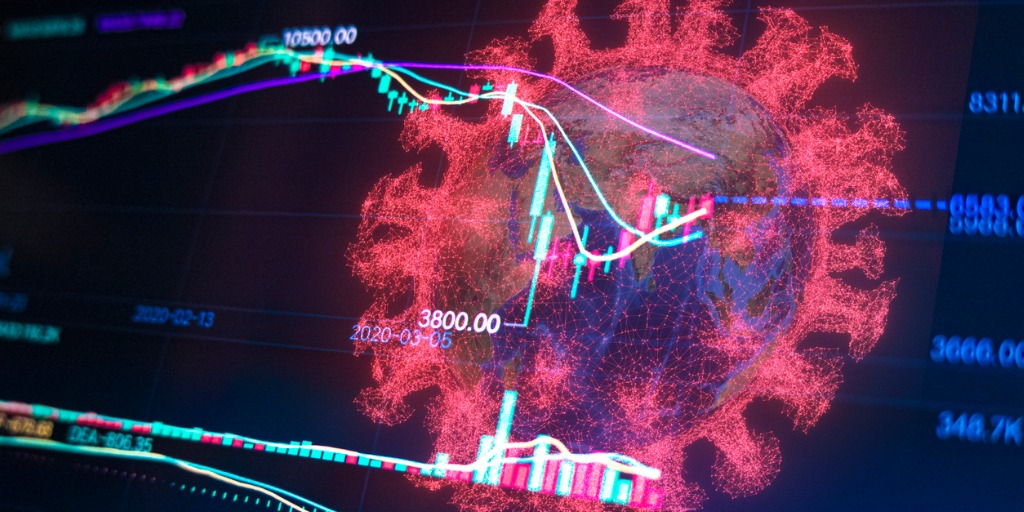2021: Five Predictions For The Year Ahead
After an extremely challenging year, many companies and households are looking to 2021 with a mixture of hope and trepidation. As vaccine rollouts begin, optimism is rising – many businesses and economists now hope that the economic recovery will be faster and stronger than expected. Nevertheless, many pitfalls remain. Employment markets may be scarred, and consumers may be more reluctant to spend than anticipated. At the same time, ongoing trade tensions will continue to cloud the outlook for global output. As we look ahead, one thing is clear – the impact of 2020 will be felt for many years to come.
Making predictions is a dicey business. Influential economist John Maynard Keynes famously failed to predict the course of foreign currency markets, nearly going bankrupt after betting against the return to the gold standard in the 1920s. Countless lesser lights than Keynes have failed similarly in the 100 years since.
Yet there is value to looking ahead and assessing the likely shape of future events. So, here are five predictions for the year ahead:
- Vaccination will progress steadily, and by mid-year, the coronavirus will be controlled to the point where restrictions will ease, boosting economic growth.
- Interest rates will remain low and growth will pick up, with the possibility of a bout of inflation ahead.
- Technological changes will continue to accelerate – and businesses that fail to adapt will suffer.
- Global tensions will intensify as trade barriers rise.
- Socially responsible investing (SRI) and ESG will continue to gain ground with the spotlight on core global challenges.
Below, we examine each prediction. Scroll to read.

1 Vaccination will progress steadily, and by mid-year, the coronavirus will be controlled to the point where restrictions will ease, boosting economic growth.
The development of vaccines against the novel coronavirus that causes Covid-19 is a true scientific success story. The speed of the development process and the impressive efficacy of the candidate vaccines is a testimony to developments in our understanding of DNA and the hard work of thousands of talented scientists. As vaccination begins around the world, with the UK taking the lead but quickly followed by the US and several other countries, it is hoped that by mid-2021 most vulnerable people and frontline workers will have received a jab and be protected from the virus that ravaged the world in 2020. A successful rollout will allow economies to fully reopen, giving economic growth a much-needed boost. The US Federal Reserve, for example, predicts that the US economy will grow 4.2% next year, while the EU is projected to grow by 4.1%.
Potential barriers to a successful rollout include unexpected safety issues, reluctance to accept the vaccine by those concerned about side effects, and lower-than-anticipated efficacy in certain groups.

2 Interest rates will remain low and growth will pick up, with the possibility of a bout of inflation ahead.
The successful containment of the pandemic should allow economies to reopen more fully over the next six months and beyond. Consumers, long prevented from traveling, gathering, and social activities may open their wallets with great enthusiasm, driving rapid economic growth. It is possible that demand may temporarily exceed supply – many businesses cut capacity in 2020 and will need some time to rebuild. This may lead to a bout of temporary inflation until production gains momentum. Nevertheless, global central banks have signaled that they expect to keep interest rates low for the medium-term, and inflation appears likely to remain contained.
Potential downside risks include labor market scarring, which could mean that a sizeable group of consumers is unable to find work and participate in recovery spending, and the risk that a failed or delayed vaccine rollout could see restrictions reimposed amid a pandemic resurgence.

3 Technological changes will continue to accelerate – and businesses that fail to adapt will suffer.
One hallmark of 2020 was the accelerated adoption of technology across industries. In a single stroke, digital medicine, digital banking, online learning, remote working, online shopping, and other innovations demonstrated their true worth. In many industries, the use of technology leapfrogged five or ten years ahead. With companies increasingly seeing the value of technology, the drive to embrace new tools will likely continue in 2021. Firms that adapt by building more flexible workplaces, finding new ways to reach customers, and taking advantage of digital tools to upskill their workers will thrive. Those that seek to return to “business-as-usual” in 2021 will likely find themselves at a disadvantage in the competition for talent and business.
There is little to stand in the way of ongoing innovation, other than the reluctance of many companies to embrace change.

4 Global tensions will intensify as trade barriers rise.
Recent years have seen rising trade tensions, especially between the US and China. In 2021, and despite the change in the US government, these tensions will endure and intensify. As the UK’s exit from the EU is fully implemented, new trade barriers will emerge within Europe. The US and China will continue to butt heads, and smaller nations will increasingly be forced to choose sides in their conflict. As a result of these tensions and the impact of the pandemic on supply chains, the recovery in global trade will be slower than the broader economic recovery and deglobalization will continue.
This negative scenario could be avoided by diplomatic breakthroughs in relations between the US and China, and the emergence of an amicable and collaborative relationship between the EU and the UK.

5 Socially responsible investing (SRI) and ESG will continue to gain ground with the spotlight on core global challenges.
The 2020 pandemic and economic slowdown highlighted the importance of building a sustainable and resilient global economic system. Floods, wildfires, and heat waves underscored the growing threat posed by climate change, and lockdowns and illness demonstrated key weaknesses in national social safety nets. These challenges have given new urgency to the attempt to place environmental, social, and governance (ESG) factors at the heart of global finance and a growing range of key global players are embracing the vision of SRI.
Progress on sustainability issues may be derailed by a slower-than-anticipated recovery or other serious economic headwinds, which may constrain firms’ ability to invest in the future and push fearful investors to focus more intensively on the short-term.
Intuition Know-How has a number of tutorials that are relevant to the year ahead:
- GDP – An Introduction
- Inflation – An Introduction
- Monetary Policy Analysis
- Fiscal Policy Analysis
- Digital Banking
- Digital Money & Mobile Payments
- Trade Finance – An Introduction
- Trade Indicators
- ESG & SRI – An Introduction


